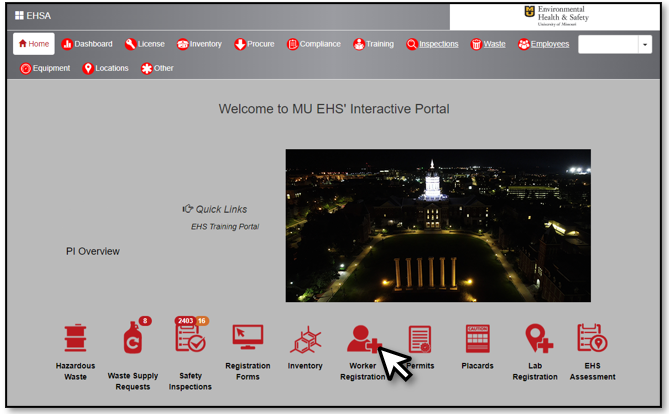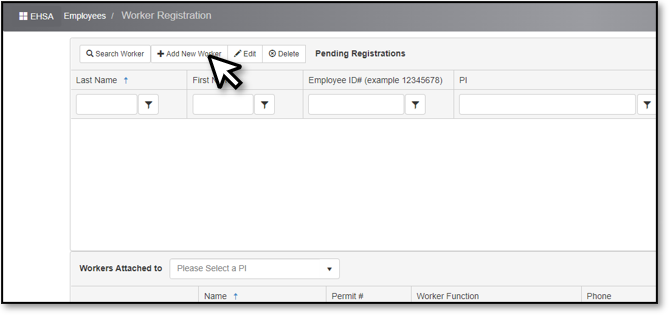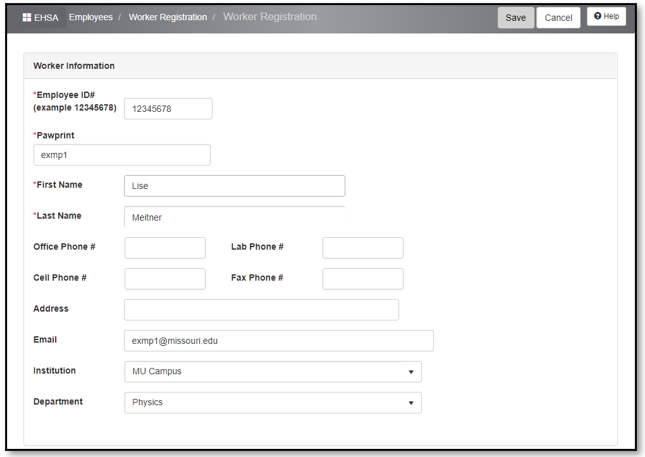The Role and Expectations of a Dosimetry Coordinator
The Dosimetry Coordinator is responsible for managing all incoming and outgoing dosimeters for the individuals listed under the dosimeter subaccount(s). Common tasks expected of the coordinator are:
- Setting up a new subaccount code,
- Setting up a new user in EHSA and informing the user the requirements to apply for a dosimeter,
- Reviewing dosimetry applications,
- Reviewing dosimetry charges,
- Preparing information for large quantity orders of dosimeters,
- Returning dosimeters to EHS.
An Overview of Dosimeters
A dosimeter is a wearable device that records exposure from ionizing radiation over a period of time. It does not protect the user from radiation and can only be read by special equipment. Due to its nature, it is important that the user appropriately wears and stores the dosimeter for an accurate exposure record. At Mizzou, we use dosimeters in two variations: badge (Pa) or ring (S). Depending on the subaccount, a badge dosimeter is worn either at the collar or at the chest.
Frequency
Dosimeters are exchanged either monthly or quarterly. This is referred as the subaccount’s or dosimeter’s frequency. The frequency dictates the period a dosimeter is worn and when it is returned to EHS to be sent for dose processing.
| Frequency | Wear Period | Return Before |
Monthly | Calendar month Example: January 1 to 31 | The 15th following the end of the wear period. Example: February 15 |
Quarterly | Q1: Jan 1 – Mar 31 Q2: Apr 1 – Jun 30 Q3: Jul 1 – Sep 30 Q4: Oct 1 – Dec 31 | The 15th following the end of the wear period. Example: A Q1 dosimeter must be returned by April 15 |
Badges
Rings
There are three sizes available: small, medium/large, and extra-large. Rings are ordered in size small by default. The applicant may request a different size in the comments section of their dosimetry application or via email to radiation safety. The rings are made to be flexible and can be shaped to better fit the wearer. The rings use thermoluminescent dosimeter (TLD) technology and are heat sensitive. They should always be worn on the user’s dominant hand, i.e. the hand most likely to be exposed to radiation.
Spare Dosimeters
Spare dosimeters may be issued so the applicant can begin wear immediately. They are easily identifiable from the “SPARE” labeling on the front and will typically only be active for the period for which it was issued. Spares may have indicators that do not apply to your subaccount such as the “wear at chest” graphic. Be sure to follow the standards prescribed to your subaccount.
Area Dosimeters
Area dosimeters look identical to badges but are labeled to be distinguishable. Area dosimeters are established in areas where additional dose from sources of ionizing radiation may be of concern.
Getting a Dosimeter
Our dosimetry program is largely managed on EHSA and therefore requires participants to have an EHSA account. Dosimetry coordinators can facilitate this process by pre-registering incoming staff.
Pre-registering Users on EHSA
In the homepage, click on Worker Registration

Click on + Add New Worker

Under the Worker Information window, complete the following fields at minimum: Employee ID#, Pawprint, First Name, Last Name, and Email.

- Below the Worker Information is the Worker Link table. Always select the following:
- PI: Radiation Safety, Training
- If the worker will be working with radioactive materials, select Permit: R-00180 (RAM)
- If the worker will be working with radiation generating machines (e.g. radiographers), select Permit: X-00021 (XRAY)

Training
All workers applying for a dosimeter must complete a radiation safety training curriculum applicable to their duties. At minimum, each worker must complete the Dosimetry Training prior to applying for a dosimeter.
Dosimetry Applications
- Log-in to EHSA
- The first tab of the application summarizes the prerequisites that must be completed prior to application and provides a link to a video tutorial on how to complete the application as well.
- The comment box may be used to provide specific information such as dosimeter wear period for temporary workers. Future deactivation dates can only be set within 6 months of the dosimeter wear date.
- Click on the next tab, Assessment Questions, to complete the form:
- fdg
- If you do not know your Dosimetry Coordinator and Subaccount Code, contact your supervisor for assistance. Dosimetry coordinators are listed by their last name then first name (e.g. Doe, Jane). Subaccount codes are typically comprised of two or three letters (e.g. CT, ATT, RYX, …).
- To submit the application, apply your e-signature by clicking on the green Sign button and press Save as Complete.